
The Iranian "Lion", hybrid Main Battle Tank
The years preceding the Islamic revolution in Iran, toppling the Shah in 1979, saw considerable, modern armaments being delivered to a regime that was contested at home and on which the western powers still tried to inflex its increasingly authoritarian derive and ultiple human rights violations. Among these were famously the controversial sell of USN F-14 Tomcats and for Great Britain, its latest and best main battle tank, the Chieftain Mark 5 and a modernized version, the "Shir". The latter became an intermediate between the Chieftain 5 and the early Challenger I, while the next Shir-2 was to be an Iranian "Challenger 2", for a total order of 1,200 main battle tanks, which would have been without a doubt the best tank force at that time in the whole middle east. A rampart against an always possible Soviet invasion of the region or soviet-supported neighbouring regimes. The development lenght of the whole program ensured in the end, the order was cancelled by the new regime of the Ayatholla in February 1979, leading to a serious impediment in the UK.Program development of the Shir
In 1971, Iran was already looking for a modern Main battle Tank, and was adviced at some point by General Israel Tal, who worked closely with the British in the Anglo-Israeli Chieftain project. Iran was demonstrated the Chieftain and took delivery of no less than 707 Mk-3P and Mk-5P ("P" for Persia), but also 187 FV4030-1, 41 Amoured Recovery Vehicles and 14 Bridge Layer versions before the 1979 revolution. In between started the development of the FV4030-2 ("Shir 1") and FV4030-3 ("Shir 2") series, both cancelled.All the Chieftain and same chassis specialied versions were delivered by early 1978, built by RO Leeds (later Vickers Defence Systems). Iran also also took delivery of 187 "improved Chieftains" called in UK "Shir Iran 1" or internally the FV4030/1, a development of the Chieftain Mk 5. As planned for the middle east, they arried more fuel, had a better mine protection, additional shock absorbers and a more modern David Brown Defence TN12 transmission and fully centralized equipment electronic control. These FV4030/1 were indeed supplied and a further order for 125 "Shir Iran 1" (FV4030/2s) and 1,225 "Shir Iran 2" (FV4030/3s) main battle tanks was to follow, plus 71 armoured recovery vehicles (ARV) also planned for a delivery in 1980.
Design of the Shir
The original order for 125 Shir-1 MBTs came out in December 1974. Often assoiated wth the Jordanian "Khalid" (not to confound with the Chinese MBT-2000), it was a late production Chieftain Mark 5, with major changes, notably a more modern fire-control system, and associated powerpack to absorb additional weight. The powerpack was indeed the same as the Challenger 1 MBT just planned to enter service with the British Army. So the Shir 1 was in essence developed as an interim design, preceeding the "Shir 2" MBT which eventually became the proper Challenger 1 MBT as introduced in the British Army. Development of the Shir 1 started in early 1974, entirely based on the Chieftain Mark 5, in close relation to Iran's massive orders, making this contry the largest foreign operator of the Chieftain. The Shir tank was marketed as a perfect firt for the harsher, dryer conditions or Northern and Southern Iran, a country three times larger than UK.General Characteristics
-The powerplant was the same as the early Challenger I, so a Rolls-Royce CV12 26 litre diesel which developed 1,200 hp (895 kW), for a power/weight of about 15 kW/tonne, coupled with a transmission David Brown TN37 with 4 forward speed and 3 reverse. It was sensibly heavier at 60 tonnes (versus 58 for the Chieftain 5), but still less than the Challenger I (62 tonnes unladen). It also had Hydropneumatic (hydrogas) suspensions, but the rest of the drivetrain, idler, return rollers, drive sprocket, and tracks, were all the same as the Chieftain, which would have helped maintenance greatly in Iran.-The armament however was the same as in the Chieftain: A L11A5 120 mm rifled gun able to fire HE, FRAG, Smoke, and of course HEAT and APFSDS shells. The Secondary armament was to include two L7 Machine Guns, one on the cupola, another coaxial.
-Protection was also the same as for the Chieftain 5, a specially treated RHA, multi-layered hardened steel armor comprising on the sloped glacis 127 mm (5.0 in) at 72°, on the Hull sides: 50 mm (2.0 in) at 10°, and on the turret 350 mm (14 in) at 60° in conventional RHA with inner composites. It was still a far cry to the Chobham in development at that time.
| Weight | 55 tons (combat) |
| Hull length | 7.52 m, |
| Hull width | 3.5 m (with skirts) |
| Height | 2.9 m. |
| Armament |
|
| Crew | 4 |
| Max speed | 48 km/h |
| Max range | up to 500 km on road (internal fuel) |
Confirmed order
In the end, the company provided three Shir-1 prototypes to be tested in 1977 at the Royal Ordnance Factory, in Leeds. After tests (made in presence of Iranian officers) were successful, first production was scheduled for delivery in 1980. For leeds it was just a slight retooling as its manufacturing facilities for the Chieftain Mark 5, and it did not need changed much. It was to be a profitable operation overall. 125 Shir 1 according to the archives, 1,225 Shir 2 also planned for procurement BY1980. In February 1979, production of the Shir 1 tank was about to start at Leeds, but of course, events decided otherwise, in Iran to the dismay of everyone involved in the program, as well as the british government.Fate
The Islamic Revolution of the same month in 1979, following the return of the Ayathollah Khomeni not only toppled the regime of the Shah to install an "Islamic republic" but it also killed all ongoing military programs related to the country, and this included the Shir 1/Shir 2 programs. The Iranian Government informed the British ambassador on 06 February 1979 that all British-related defence contracts made by the previous regimes were to be terminated or discontinued. The contracts were cancelled on the british side eventually, norified to Leeds which sent the appropriate closure documentation. Contracts with Iran however involved ongoing payments and the Leeds factory, after years of R&D pressured the PM not to renounce the sums involved for the tanks already supplied.Total value of the contract for the Chieftain was quantified to £1,250 million and some of the Chieftain tanks has been delivered already. Soon in addition to the payment of the delivered tanks, there was the question of what to do with the second batch of about 100 tanks, of the 'improved Shir I'. The contract indeed mentioned 1,200 Shir tanks and when repudiated it, and Leeds was left with a small number of partly completed tanks and materials provisoned for others, and still needed several years to complete in their definitive form.
Various options were considered:
-Use by the British Army:
The Shir were too heavy for German bridges, too large for rail gauges and still tailored for Iranian conditions, not British. It was out of question to replace the Chieftain built in Elswick, Newcastle, but this additional, not needed batch was costly. The Shir also was not an alternative to MBT80 intended for Northern Europe. Also re-equipped the army for a new tank was a long and costly endeavour. Finalizing the MBT-80 was less costly and made more sense than converting the Shir.
-Finding other customers: Jordanian Khalid
Last-minute negotiations by British authorities with the Royal Jordanian Army led eventually to fruition, as the Shir 1 was still conveniently suited for the Jordanian climate. To better conceal the contract, the new tank was called the "Khalid" ("Sword"). A contract was signed for 274 reconditioned Shir-1, worth £266 million by November 1979. Deliveries were scheduled to start in 1981. The Khalid MBT however ended with different engines: A Perkins Engines Condor V12 diesel engine, whole the Jordanian asked for many other internal changes. But overall, the the Khalid was still an in-between with the Shir and Chieftain, apart from their raised engine compartment and updated fire control system close to the Challenger 1. The Khalid was essentially an intermediate hybrid of the FV4030/1 Chieftain and FV4030/3 Challenger 1, a Shir 1 with the Chieftain 5 hull and protection, but new engine and powertrain closer to the Challenger. The Royal Jordanian Army FV4030/2, locally "Khalid MBT" started to arrive in 1981.
The Shir II
The Shir II designed for Iran was much more advanced and closer to the Challenger I: It was fitted with Chobham armour. Fitting the replacement armor for the existing Chieftain would have require a completely redesigned hull and turret, a very costly conversion, not cost-effective. The British government recoignised that the 10+ years old Chieftain, also underpowered, would be replaced by a brand new model with a large series of improvements across the board to ensure that it remained effective in the late 1980s, able to counter the latest Soviet tanks until the 21st century. As we all know, this led to the brand new Challenger I and even more modified Challenger II for the next decade (1990s). The R&D made on the Shir II were all passed onto the Challenger I.The MBT-80 program
In the aftermath of the Iranian Revolution, and cancelled contracts for the Shir 2 tank, the British defence industry was massively impacted. Leeds was soon forced to cut labor down at ROF plant. Still, the British government was looking into a way to preserve the knowhow and skills and manufacturing capacity at Leeds. It was decided there to produce the next generation of main battle tanks. There were attempts to have the new Main battle tank into production as quickly as possible but the design process took time and it's only by the mid-1980s that the MBT-80 would be ready for production, also incrporating the latest intel on Soviet tank technology. The T-80, about to enter service in 1985 would render other frontline British MBTs obsolete, in fact sooner than predicted. But alas, after a government change, the entire programme was cancelled in favour of the Challenger 1 developed from the Shir 2 as a private venture already at Leeds, readily avilableto be dlivered from 1983, effectively replacing the Chieftain tanks. Instead the MBT-80 evolved into an upgrade of the Challenger 1, turning into the 1990s Challenger 3 instead.Late settlement
On 27 April 2010, the Hague international trade court ordered Great Britain to pay Iran $650 million, after failing to deliver the 1,300 tanks initially requested by Mohammad Reza Pahlavi. This became a propaganda victory for the Iranian regime, but still Tehran, was not to gain any material benefit from decision ruled at The Hague. Financial restrictions on Iran's banking system made that the funds that was to be paid by British government ended instead into a trust account, managed by independent trustees. They became essentially a more dynamically bankable versions of the frozen Iranian assets. $1.57 billion in total from Iran has been frozen in Great Britain before the court's rule and the targeted contracts were worth 650 million pounds, over a total of $1.04 billion in the late financed by 1970s Iran's oil wealth, and initially contributing to keep Britain's defense industry going on after the 1973 international crisis.Read more/Src
The Khalid MBTThe MBT-80 program
About the Khalid MBT on army-guide
The Khalid MBT on militaryfactory
arcaneafvs.com
Illustrations

"Shir-1" showing its sand beige camouflage.

Iranian Mihr.

Jordanian Khalid MBT.

Jordanian Al-Hussein, close to what the Shir-2 would have been like in the late 1980s.
Photo Gallery
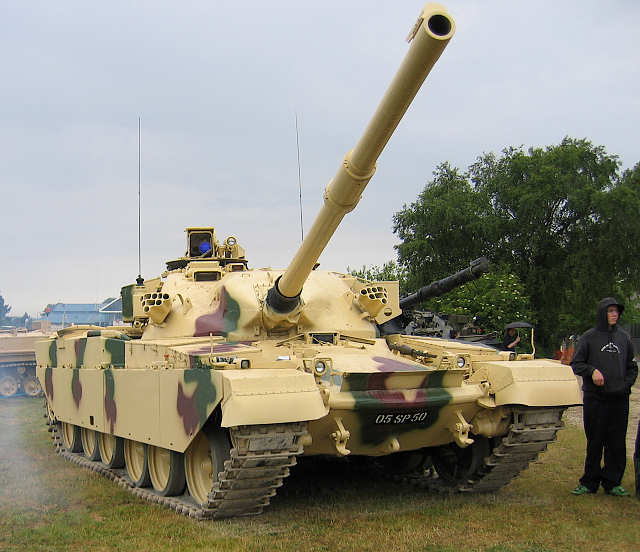
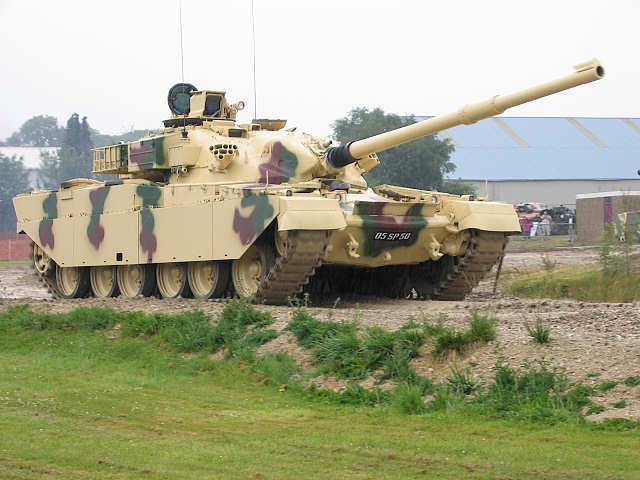
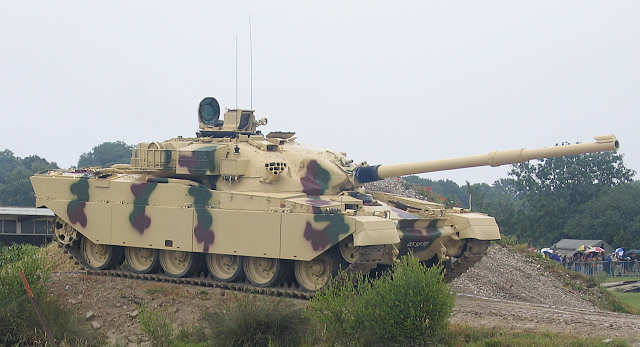
Shir-1 in Bovington
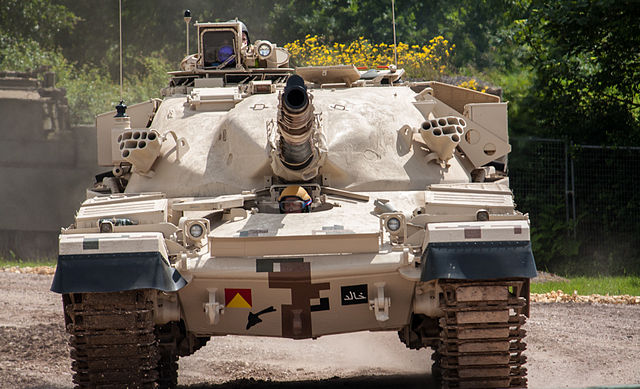

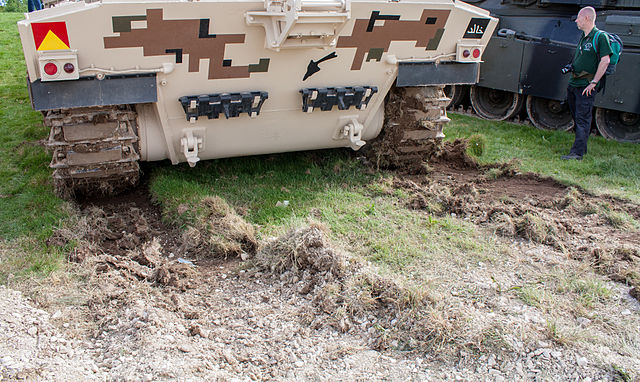
Khalid MBT in Bovington
Video

Cold War Tanks


































Cold war tanks posters

Cold War Main Battle Tanks

Cold War Soviet Army


